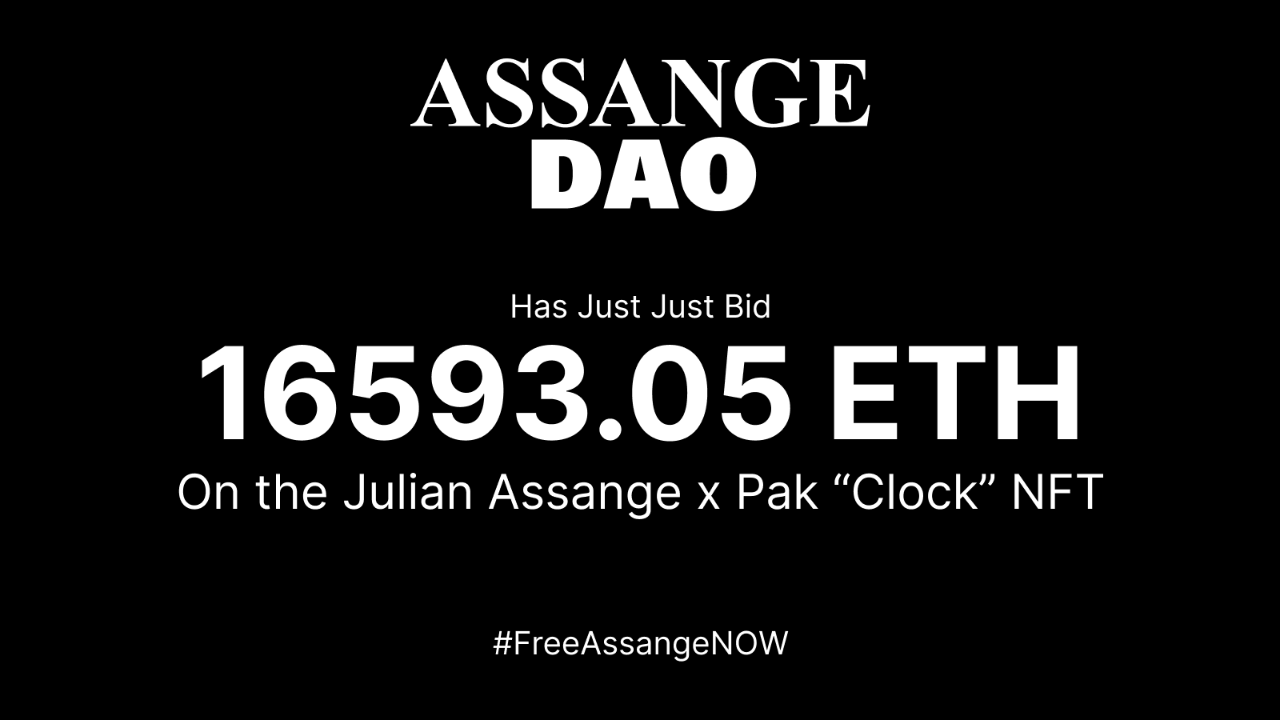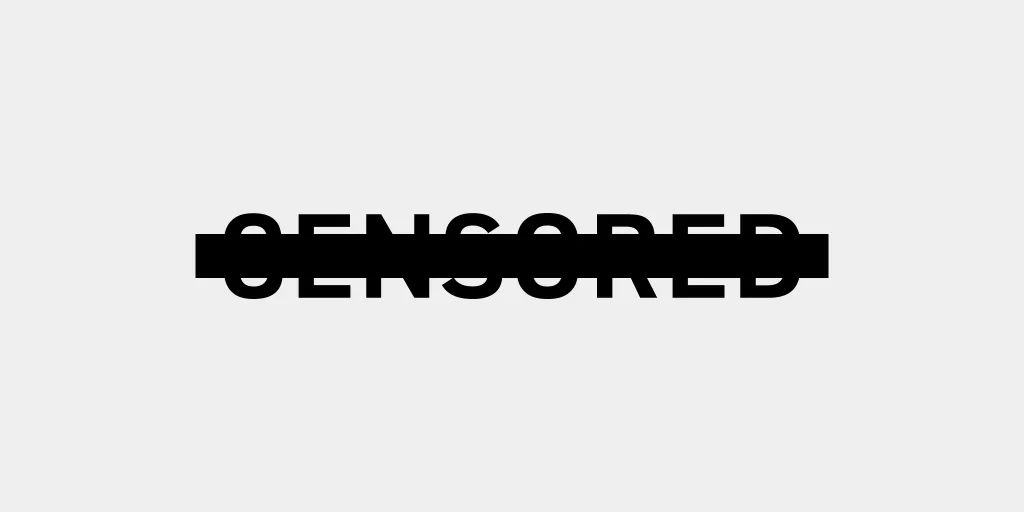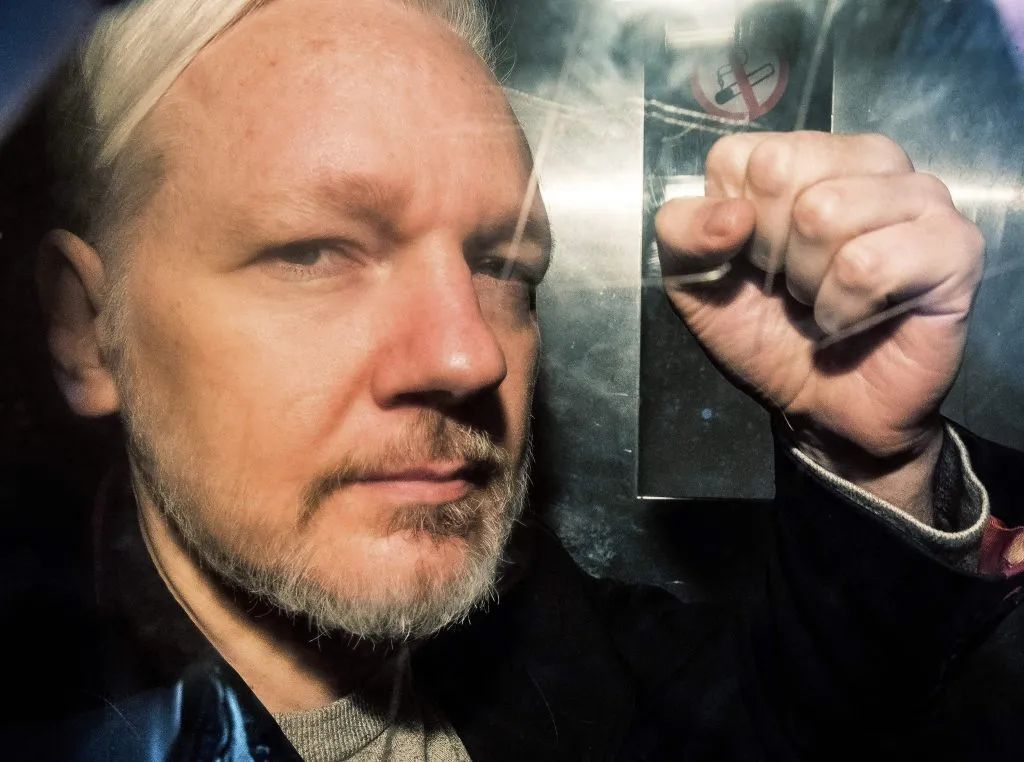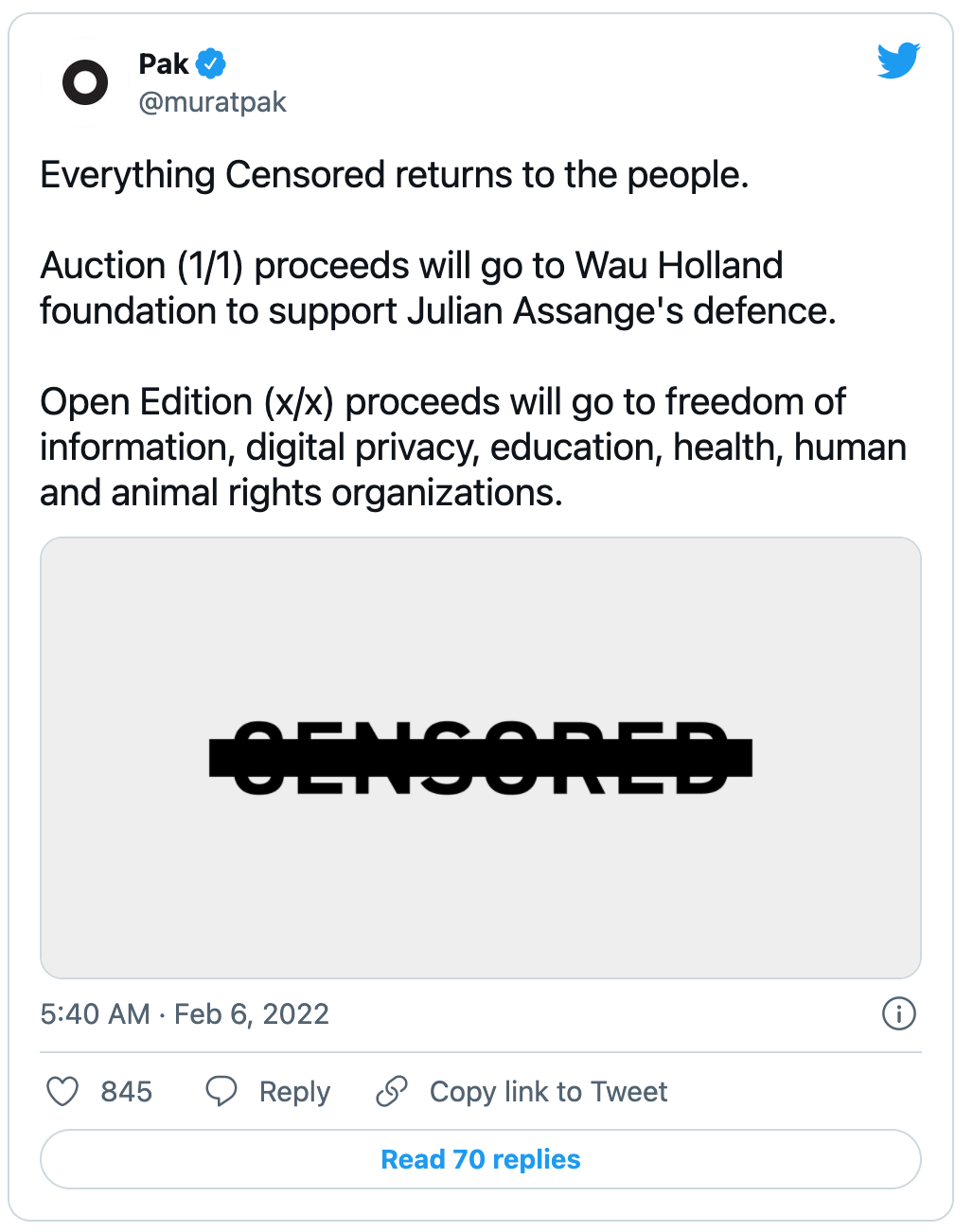Author: Vivienne Chow
Original Source: Metaverse Special Attack Team
Just at 18:44 on February 9, 2021, Beijing time, AssangeDAO took all the Ethereum it raised (deducting the handling fee of the fundraising platform JuiceBox) 16593.05 ETH to bid for the NFT work "Clock" jointly produced by Pak and Assange.

secondary title
By Vivienne Chow
Encryption artist Pak teamed up with imprisoned WikiLeaks founder Julian Assange to launch an NFT series called "Review", which just went live today (Note: refers to February 7, 2021) for a 48-hour, 2 parts online sale. Proceeds will go to Assange's legal battle, as well as freedom of information causes.
The Feb. 7 release date coincides with a deadline for Assange's lawyers to ask the U.K. Supreme Court to reconsider the U.S. government's extradition case against him.

The first part of the "censorship" NFT is the public auction of a unique NFT work "Clock", which has a silent timer counting the number of days Assange has spent in prison. Proceeds from the auction will go to the Warholland Foundation, a Hamburg-based nonprofit that has supported WikiLeaks since 2009.
The second part of the "review" NFT is a play on the sales concept of "free price". Buyers can tokenize a message to create a work that is an open edition NFT in the "Review" series. Buyers can choose to pay any price (including zero) to mint the NFT they want, and there is no limit to the number of tokenized messages created within the 48-hour window (only one tokenized message can be attached per crypto wallet, Buyers need to pay gas fees when casting NFT works).
The work follows in the footsteps of Pak’s other crowdfunded NFT work, “The Merger,” which was sold in pieces to nearly 30,000 buyers in December for a total of $91.8 million.
The newly established AssangeDAO is a "cyberpunk collective" established to bid for the unique NFT work "Clock". In just 5 days, it has raised more than 13,252 ETH (41.4 million US dollars) on JuiceBox, an encrypted version of Kickstarter. The previous record was set by ConstitutionDAO, which raised 11,613 ETH ($36.7 million) on JuiceBox in an unsuccessful attempt to buy a rare copy of the U.S. Constitution at Sotheby’s.
Nearly 6 hours after the “censorship” was published, cryptosphere users have created around 14,000 tokenized messages (viewable on OpenSea).
Since April 2019, Assange has been locked in a prison in London, England, after his asylum period at the Ecuadorian embassy in the UK ended. The espionage charges he now faces stem from WikiLeaks' release in 2010 of hundreds of thousands of leaked documents related to the U.S. wars in Afghanistan and Iraq. If convicted in the United States, he could face up to 175 years in prison. A British court ruling in December allowing Assange's extradition to the United States sparked an outcry from press freedom advocates, including Chinese artist-activist Ai Weiwei.
image description

WikiLeaks founder Julian Assange gestures from the window of a prison van as he drives into Southwark Crown Court in London on May 1, 2019, as he was sentenced to 50 weeks in prison for breaching his bail conditions in 2012 (photo: AFP Daniel Leal).
How did you and Julian Assange start working together?
A few months ago, Julian's older brother Gabriel [Shipton] contacted me. I had the opportunity to dig into Julian's story. At the time, I was working on a free-themed airdrop. Because of my personal issues as a creator in the arts, I constantly feel gatekeeping and censorship. I fell in love with creating different mechanisms to convey my message. For Censorship, this airdrop needed a good reason to exist, and Julian was just the thing.
The most important message (that I want to convey) is that "censorship is everywhere".
The work's release date coincides with an important deadline in the Assange extradition case. How have you followed this closely over the years, and what are your impressions of the political chess game and court proceedings so far?
politics? what is that?
Proceeds from the auction sale will go to the Warholland Foundation, which supports WikiLeaks. What will this money be?
Proceeds from the auction of the exclusive NFT "Clock" will go to the Warholland Foundation, which supports Julian's cause, while proceeds from the public NFT will support organizations working on information freedom, digital privacy, education, health, and human and animal rights. In other words, everything that is censored ends up in the hands of the people.
Why is freedom of information important to you, and how does the crypto world play a role in this fight?
Why do you want to include "open edition" works in the "censorship"? Does it have widespread importance in your NFT works?
In my early 2020 work X, I invented the Open Edition mechanism. It was called the "Infinity Edition" at the time, and its purpose was to dynamically solve the supply and demand dilemma. Over the course of a year (or a century in crypto circles), the open access mechanism has established itself as the most successful method of reaching individuals and building communities. I've adapted my Open Edition design into various other configurations, including the Fungible Open Editions I worked with Sotheby's on and the Fungible Open Editions in my recent record-breaking Merge. "Stacking Open Editions". So I think it's crucial to preserve its beauty in a collection of work that speaks to so many of us. This is the first time that the open version airdrop is provided for free under the "pay-as-you-go" model. I think it will once again change the industry landscape forever.
Why do you call this "one of the biggest series ever released"? In what respect is it the greatest?
Merge currently holds the record for the largest community built around a single collectible, with over 30,000 individual collectors. In my opinion, "Review" is a strong contender for a similar position.

You use "them" to refer to you, and your identity remains unknown. Do you think you will remain anonymous forever? Why is this important to you, especially given your support for a cause like WikiLeaks that promotes transparency?
I am not anonymous. I'm Pak, as my public records show. I try to separate my physical presence from my work because I feel that when people see a face, they automatically think of it when they hear the name. Rather than that, I hope people will be reminded of my work.
You have said that you initially discovered crypto art a few days before the first airdrop. But when did you start paying attention to art? What about cryptocurrencies? How are they interwoven in your NFT?
As an early investor in Bitcoin, I always thought that cryptocurrency was my field. As you can see, I've been creating digital art for almost two decades, so I consider it my creative field. It's a nice intersection of the two. I don't think I create art; rather, I think I create design at the intersection of beauty and technology. I don't consider myself an artist.
Some critics have argued that the selling mechanism of your work is the way you play with or challenge certain notions of economics and production. You have said that gamification is the key to the value of crypto art. How do you see your calling?
I don't care if it's art, I care if it's fun. If it's not intriguing, why is it valuable?
You have said that the future of art will be "innovation at the contract level, even for art". What do you mean by that?
NFTs achieved prominence through what we call crypto art, which was originally all about images, pixels, and "right-click to save" files. A file, or image, is just one element in the homogeneous metadata of a blockchain contract. From the beginning, I focused on the other depths of the medium; I found the trivial details, the "images", to be tedious, even though I felt I was perfectly capable of creating them. Focusing on imagery and judging the output of this medium by its appearance alone is a naive point of view that is NGMI [won't succeed]. Would you choose a banknote based solely on the image on it? Only if you are ignorant.
What's your take on the concept of ownership? Will the idea of owning a piece of art (or NFT) alone become obsolete in the future?
ownership? We are not there yet.
You seem to be critical of the art market, yet you work with the big auction houses. What are you trying to achieve there?
Variety.
What do you think is missing in the crypto art industry? What would you like to see more of? or less?
History is missing, and we are creating it together.



